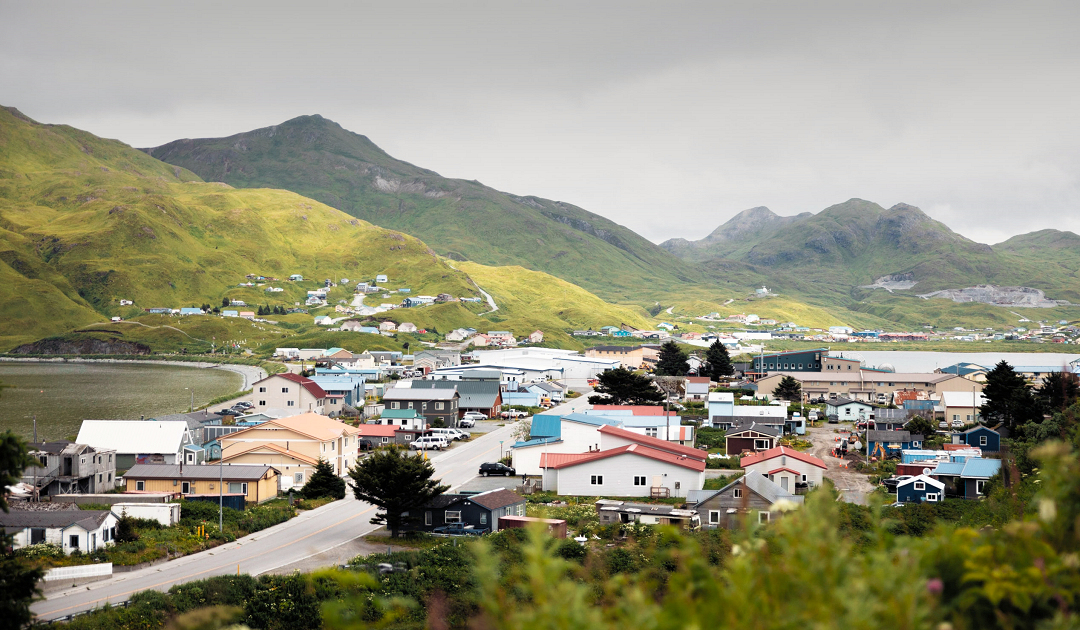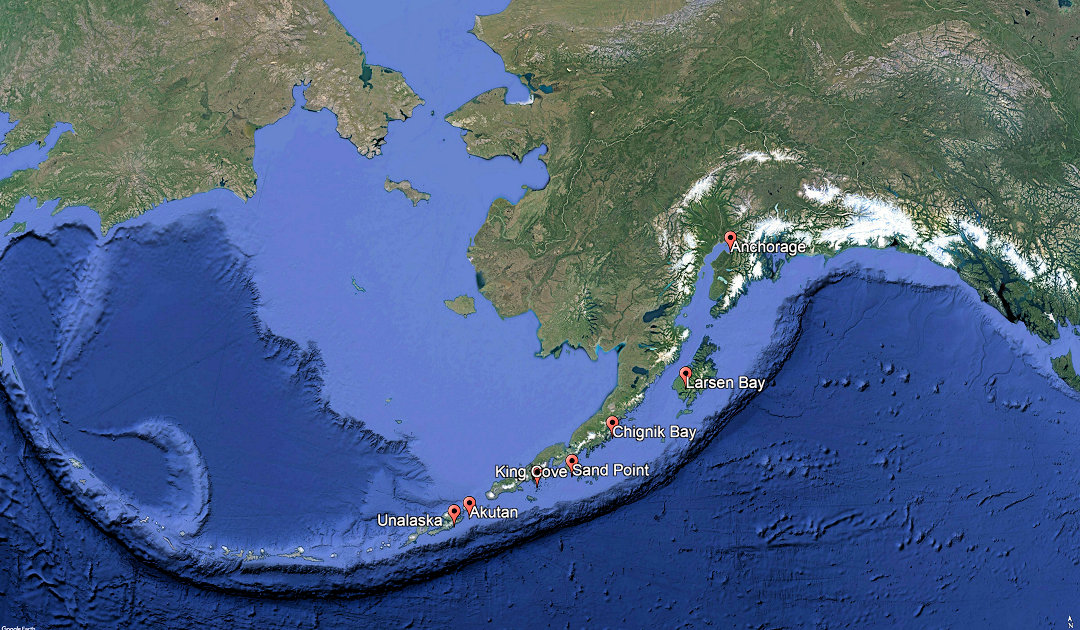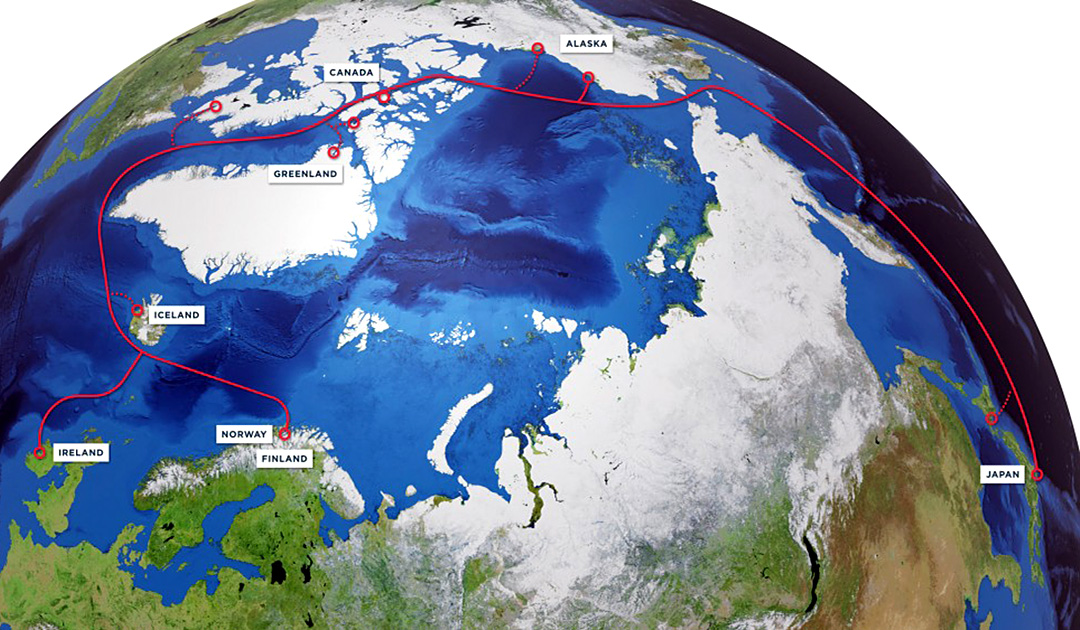
A fast and secure Internet connection seems to be a matter of course for many people nowadays in order to be reachable and receive information anytime and anywhere. However, many regions in the Arctic are still cut off from high-speed lines today and get their access mostly through satellite links. For the Aleutian Islands near Alaska in the Bering Sea, this will change fundamentally in the near future.
Around 1,300 kilometers of fiber optic cable are currently being laid from the village of Unalaska on the Aleutian Island of the same name to Larsen Bay on Kodiak Island in order to provide the inhabitants of the Aleutian archipelago with a better Internet connection. At up to 2 gigabytes per second, the US$58 million project by Anchorage-based communications firm GCI Communication Corp aims to connect the six main towns on the islands between Unalaska and Kodiak with the rest of the world in the future. “To realize that we’re only about 800 miles away from having the backbone infrastructure in place to deliver urban-level connectivity to some of the most-remote communities in the nation is incredibly exciting,” said Heather Handyside, GCI’s director of communications.


The fiber optic cable, which originated in Germany, was first transported by ship over 22,000 kilometers to Unalaska, on huge reels, and is now placed by the cable ship C/S Intrepid from the village on the island of the same name to Larsen Bay on Kodiak Island. In between, four other locations will be connected to the fiber optic cable. GCI states that by the end of the fall, this work should be completed, just in time for the start of potential winter storms in the region. Over the next two years, onshore teams will then prepare households in stages for the new “gold standard,” as GCI affectionately calls it, and carry out the necessary technical work. As a result, all homes in the six towns along the cable will receive the fastest, most reliable Internet connection in the state. “This level of connectivity is truly life changing and will empower the residents of these communities to engage with the state, the nation and the world like never before,” says Jennifer Nelson, GCI’s rural affairs manager.

The project is particularly challenging for GCI, which already connects 200 communities in Alaska. This is because the Aleutian Islands are part of the Pacific Ring of Fire and are thus tectonically still very active. Earthquakes, submarine earthquakes and volcanic eruptions are not uncommon. In addition, the sensitive underwater world had to be taken into account when planning the route. That’s why the company also has several marine biologists on board the ship to monitor the laying and potential impact on marine life. Even on land, “special precautions have already been taken to ensure safety and maintain integrity of Alaska’s ecosystems and cultural resources,” GCI said in a news release.

The most important thing for GCI is to bridge the digital divide that has existed between the islands and the mainland and provide the approximately 7,200 residents, most of whom live in Unalaska, with a standard of communication that is common in cities. That’s why the company is financing more than half of the project out of its own pocket. “This battle against the digital divide is a lifelong, endless battle because the goal posts are going to be constantly moving with evolving technology,” says Ron Duncan, GCI’s chief executive and founder. “Fiber service, the gold standard of broadband connectivity, will enable Unalaska, the nation’s largest fishing port and a gateway to the American Arctic, and the other project communities, to realize their full economic potential while advancing the national security interests of the United States.”


GCI’s project to build a fiber optic line to connect remote areas in the Arctic is the third major project in the Arctic. Another project, “Arctic Connect,” has been underway for several years, which involves laying a fiber-optic cable through the Arctic to connect Europe with Asia. First, the Finnish communications company Cinia wanted to carry out this project with Russia and lay the cable along the Northeast Passage. But a sudden withdrawal and the announcement by the Russians that they wanted to carry out their own project, “Polar Express”, caused “Arctic Connect” to falter briefly. In the meantime, a new partner has been found in Far North Digital, with whom the cable is to be run from Northern Europe via Greenland, the Canadian Arctic and Alaska all the way to Japan. In between, the Arctic regions should benefit from the fast communication possibility and get their gateway to the wider world.
Dr Michael Wenger, PolarJournal
Contributed image: courtesy of GCI Communication Corp.
More on the topic





